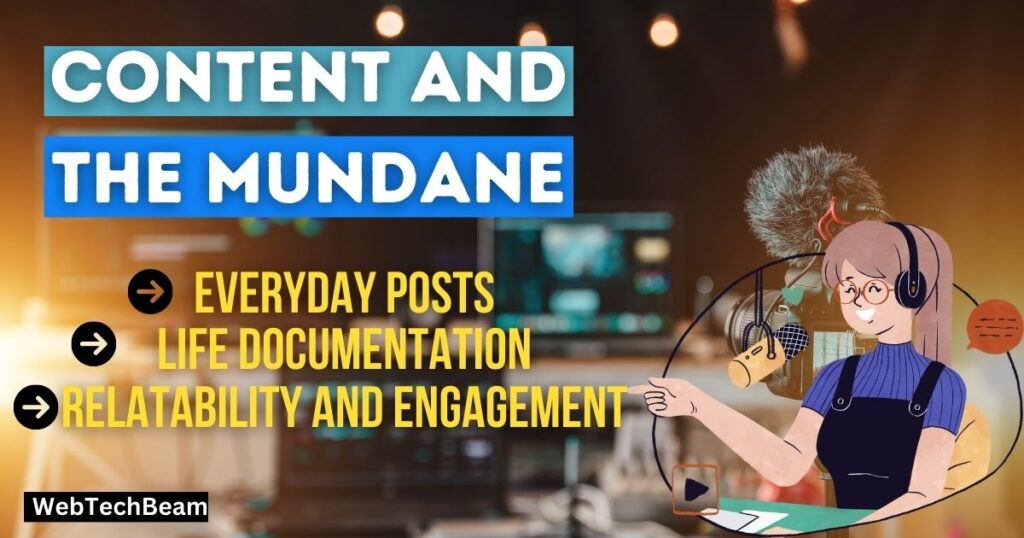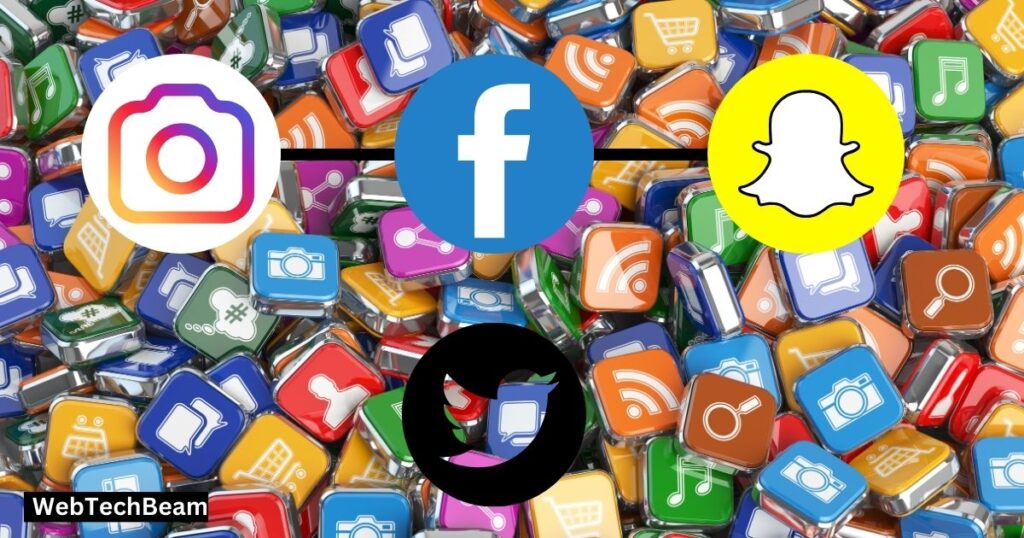Social Media App Banality of Life

“Banality” describes life’s commonplace, boring, and uninteresting parts. Regarding social media applications, banality refers to the ordinary and repetitive postings that users publish about their everyday lives, such as their breakfast choice, commute to work, or a straightforward selfie.
The banal parts of daily life are often overlooked and disseminated through social media apps. By encouraging users to share their daily experiences with their followers, these platforms raise awareness of and occasionally even celebrate mundane events.
Social media makes ordinary activities more shareable by capturing almost every moment, making distinguishing between noteworthy and ordinary activities harder.
We shall go into great detail regarding “Social Media App Banality of Life” in this post.
Section 1: Ubiquity of Social Media
Prevalence
Worldwide, social media is viral. Millions of individuals use social media sites like Twitter, Instagram, and Facebook daily. Research indicates that around 50% of people worldwide use social media, demonstrating how ubiquitous it has become in our daily lives.
Accessibility
Social media’s accessibility across a wide range of devices is one of the factors contributing to its widespread adoption. You may use social media apps on your computer, tablet, or smartphone to interact with people anytime and from any location. Due to its accessibility, social media has become a regular part of our daily lives.
Integration
Social media usage has merged smoothly into our daily routines. Many of us publish updates about our days and share pictures of our morning coffee on these platforms.
Because of our frequent sharing, social media has become less like an online and offline world and more like an organic extension of our everyday lives.
Section 2: Content and the Mundane

Everyday Posts
Posts describing routine tasks abound on social media. Photos of meals, whether prepared at home or from a restaurant, are frequently shared by users.
People frequently share photos taken from their cars or pictures of the scenery from their train seats as part of their commute updates. These seemingly mundane messages comprise a significant portion of the content in our social media feeds.
Life Documentation
Recording every life event, no matter how tiny, is another trend on social media. Users post everything, including their nighttime rituals and nightly strolls, as well as their morning attire and habits.
A digital journal that others can follow and interact with can be created by individuals thanks to the trend of recording almost every facet of daily life.
Relatability and Engagement
By sharing these commonplace, everyday experiences, people can feel more relatable to one another. Social media feels more intimate and linked when users share details about their everyday lives, allowing others to recognize parallels in their own lives.
Content of this nature frequently provokes discussions, likes, and comments, encouraging interaction and creating a sense of community among users.
Section 3: Impact on Perception of Life
Self-perception affects how we see ourselves in connection to particular ideas as well as how others see us. This constant exposure to images of seemingly perfect individuals can lead young people to develop unrealistic expectations about their own appearance and life achievements.
According to: Children’s Commissioner
Normalization
Constant exposure to meaningless stuff on social media can significantly affect how people view everyday life events.
People may begin to perceive ordinary activities—like having breakfast, driving to work, or lounging around the house—as more important than they usually might when they see posts about them frequently.
Social norms may change due to the banalization of everyday life, making it more acceptable and commonplace to disclose even the most insignificant facts of daily living.
These commonplace exchanges can shape social media culture over time, affecting what people think is essential to record and share.
Comparison Culture
Beyond normalizing, social media impacts how people compare their lives to those of others. The polished, well-edited depictions of everyday life that frequently populate social media feeds create an air of perfection.
Those who browse through these perfected portrayals may draw unhealthful comparisons. Because their lives don’t match the allegedly ideal lives they witness online, people may believe their lives are less engaging or satisfying.
People who continuously compare their everyday experiences to the exaggerated and frequently fictitious representations on social media may feel inadequate and unsatisfied due to this comparison culture.
Mental Health
Mental health might suffer significantly when people believe their lives are monotonous due to the repeated and insignificant stuff they encounter on social media. Being in the ordinary all the time can make one feel bored and restless.
In addition, tension and anxiety might result from the need to project a well-curated life. Because they worry that their posts might otherwise be viewed as dull or uninteresting, users may feel compelled to keep up with the constant flow of content.
Users may experience sadness due to this continuous involvement and the following comparisons as they struggle with a persistent sense of inadequacy and worry that their lives are meaningless or boring.
Also Read: Unveiling Amazons GPT-44X: How it Can Be Helpful?
Section 4: The Role of Algorithms

Content Promotion
Social media companies employ algorithms to determine which posts users are most likely to see. Trivial information, such as amusing memes or daily activities, is frequently given priority by these algorithms since it is more likely to elicit fast responses from users.
The algorithm notices whether you like, remark, or share a humorous photo or a friend’s daily update, displaying more of that content in your feed. By continuously offering easy-to-read and entertaining content, this cycle keeps you interested.
Engagement Metrics
Likes, shares, and comments are essential engagement metrics that help determine what material on social media becomes popular.
A post that receives a lot of interaction is promoted more extensively by the algorithm since it is assumed to be engaging and relevant to users. This implies that more users will view content that receives fast and frequent reactions, strengthening the appearance of related posts in everyone’s feeds.
Therefore, these kinds of posts will become more and more prevalent on social media as more people engage with everyday posts.
Echo Chambers
Echo chambers arise from the algorithm’s persistent reinforcement of a particular material, reducing the diversity of content users are exposed to.
The algorithm ensures that identical information keeps appearing in people’s feeds because individuals primarily interact with familiar and insignificant posts. Because of this reinforcement, users may have a limited perspective of life online, seeing mainly pointless posts and routine activities.
This bubble effect can skew people’s perception of reality over time by emphasizing the importance of insignificant events and limiting their exposure to different viewpoints.
Section 5: Counterarguments
Creativity and Inspiration
Some people think social media may be a tremendous instrument for inspiration and creativity in addition to being a place to share insignificant moments.
“Creativity is seeing what others see and thinking what no one else ever thought.”
– Albert Einstein.
Users contribute artwork, music, dance, cooking talents, and more on social media sites like Instagram, YouTube, and TikTok. These posts may motivate some to attempt new pastimes or develop their skills.
Social media is a center for creative interchange because it inspires people to think creatively and generate original ideas.
Connection and Community
Additionally, social media is essential for creating communities and fostering connections. Through platforms, people may locate and join groups that are similar to their interests, such as book clubs, gaming, or gardening.
These virtual communities provide a forum for individuals to engage, exchange advice, and provide mutual support. By linking users with others who share their interests, social media reduces feelings of loneliness and fosters a sense of community and support from one another.
Section 6: Coping with Banality
Mindful Usage
Making thoughtful use of social media is one approach to combat the monotony it can occasionally bring. This entails understanding when, how, and why you utilize social media. Rather than idly browsing through your stream, consider what you want to view and why.
By establishing aims, you can spend less time on less significant articles and more time on stuff that fascinates or makes you happy.
Content Curation
Curating your social media feed entails picking and choosing which accounts to follow and engage with. You can increase the value of your feed by selecting to follow individuals, pages, and groups that provide uplifting, informative, and varied information.
Your time on social media becomes more meaningful and less repetitive due to this deliberate selection process that gives you access to a broader choice of topics and opinions.
Digital Detox
Regularly stepping away from social media—also known as going on a “digital detox”—can be pretty helpful. You may do more fulfilling things in the real world, like hanging out with loved ones, taking up a hobby, or taking in the scenery by putting down your electronics.
By taking these breaks, you may free yourself from the tension and anxiety that come with being online all the time and make more room in your life for meaningful experiences.
What Social Media App Highlights the Banality of Everyday Life?

Instagram is frequently the first app that springs to mind when discussing social media platforms that draw attention to the humdrum of daily life. Through stories and posts, this platform allows users to share images and videos of their everyday activities in real-time. Instagram users often share seemingly routine or unremarkable moments, such as a photo of their dinner, a video of their cat doing something cute, or a picture of their morning coffee.
Facebook is a further example. Users are encouraged to share movies, photos, and status updates about their daily activities on this site. Facebook is a popular platform for sharing their thoughts, weekends, and current activities. These blogs frequently highlight the commonplace facets of life, allowing friends and family to witness the dullness of daily existence.
Twitter is notorious for disseminating the dullness of daily existence. Because Twitter has a limited character limit, users tweet brief updates about their feelings, opinions, and daily activities. These tweets highlight the commonplace parts of life, ranging from what individuals had for breakfast to their views on the weather.
Finally, Snapchat lets users share in-the-moment photos and videos that frequently document ordinary moments. Snapchat stories’ transient nature encourages frequent, spontaneous sharing, turning the app into a central location for updates on daily life.
Social media applications such as Instagram, Facebook, Twitter, and Snapchat facilitate the sharing and celebrating of everyday experiences, showcasing the mundane in a way that fosters connection and engagement among users.
Conclusion
The ordinary facets of our lives are highlighted in large part by social media. Instagram, Facebook, Twitter, Snapchat, and other social media platforms are used by users to share their daily activities, including tiny moments with friends and family and daily meals. Frequently disseminating mundane occurrences can give them a greater sense of significance and attention than they deserve. It restricts our exposure to various viewpoints and experiences by creating an echo chamber where we frequently see the same stuff repeatedly.
In the future, social media use is likely to keep changing. Newres may alter the way we share and view our everyday lives. There might be a stronger emphasis on meaningful interactions and a wider variety of information to balance the visibility of essential and commonplace moments. In addition, as people become more conscious of how social media affects how we view the world, they might start using content curation and mindful usage techniques to enhance their online experiences.





